With more time being spent in the garden in Spring, you begin to notice what effect a typical Winter may have on your lawn. Two main issues are that of constant dampness causing rotting of the grass and the rapid growth of moss taking advantage of the low light levels and dampness.
Depending on the scale of the damage, you may find it more cost effective to consider laying new turf. Out with the damaged and in with the new, fresh turf ready for a new season. Spring is a good time to lay the turf as it is not too hot yet and usually there is plenty of rain to help with the watering and settling in.
We were instructed by our client to remove her old lawn, which was mainly moss, and lay a new turf, which she could enjoy for the Spring and Summer. With the correct care and maintenance regime, it is possible to enjoy a good lawn for many years.
 We began the process by removing the older grass. The idea is to skim the spade about an inch below the soil level making sure you get the majority of the existing root. This process is hard labour and can take the most amount of time. You know what they say,…’It’s all in the prep work’
We began the process by removing the older grass. The idea is to skim the spade about an inch below the soil level making sure you get the majority of the existing root. This process is hard labour and can take the most amount of time. You know what they say,…’It’s all in the prep work’
After all the old grass has been removed, we spend a fair amount of time looking for uneven areas and skim some soil off the raised areas and use that to fill in the deeper areas. Something to consider is the drainage of excess water. Create a very slight decline towards a point in the garden where it would be beneficial to have more water.
 Once you are happy with the levels, a fresh new layer of top soil needs to go down as a base for the new turf. As grass is shallow-rooted, it would be highly beneficial to lay approximately 2 inches of new top soil. This has to be factored in, when removing the old soil, as the level of the lawn will need to be at a required level, such as level with existing paving. Once the top soil has been put down, it will need to be slightly compacted to ensure that where the heavier traffic will be, it will not drop too much. We always use the back of the rake to level it off for one last time.
Once you are happy with the levels, a fresh new layer of top soil needs to go down as a base for the new turf. As grass is shallow-rooted, it would be highly beneficial to lay approximately 2 inches of new top soil. This has to be factored in, when removing the old soil, as the level of the lawn will need to be at a required level, such as level with existing paving. Once the top soil has been put down, it will need to be slightly compacted to ensure that where the heavier traffic will be, it will not drop too much. We always use the back of the rake to level it off for one last time.  The pre-turfing feed is then applied to encourage faster growth of the root system. Then the hose comes out and the area is given a good soaking to ensure the turf goes down on damp and enriched soil for the best results.
The pre-turfing feed is then applied to encourage faster growth of the root system. Then the hose comes out and the area is given a good soaking to ensure the turf goes down on damp and enriched soil for the best results.
You are now ready to lay the turf…
Each roll gets laid down making sure that they meet each other with neat precision. As more rolls get laid, take care to ensure they are in a straight line and the edges meet. With each row of turf, alternate the sequence like a brick layer would when layering bricks for a wall. This means that there would be a degree of cutting required at either end of the row on certain occasions. Once the turf has been laid, it will require a thorough soaking of water .
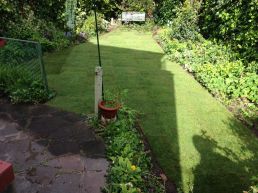 Be generous, as this will encourage the grass to settle in quicker. As aftercare, the grass will need regular water, depending on the weather. As a rule, water more frequently in warmer weather and less frequently in colder, wetter weather. The speed of establishment is dependant on the regular watering. Stand back and watch your grass develop into a lush lawn that will be the envy of the neighbour.
Be generous, as this will encourage the grass to settle in quicker. As aftercare, the grass will need regular water, depending on the weather. As a rule, water more frequently in warmer weather and less frequently in colder, wetter weather. The speed of establishment is dependant on the regular watering. Stand back and watch your grass develop into a lush lawn that will be the envy of the neighbour.
Happy gardening this Spring…
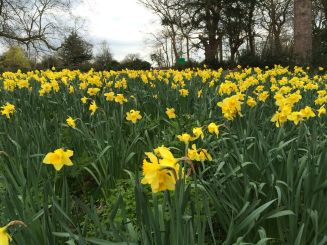 1. As the milder weather continues, take control of the weeds.
1. As the milder weather continues, take control of the weeds. 6. Choose your desired method, but try to keep the slugs and snails off the fleshy young growth.
6. Choose your desired method, but try to keep the slugs and snails off the fleshy young growth.
 1. Still ensure that all your tender plants are securely protected by fleece.
1. Still ensure that all your tender plants are securely protected by fleece.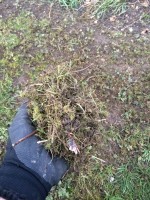
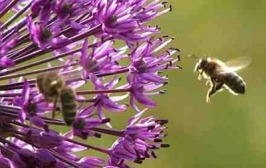 2. It’s an exciting month, as all Summer bedding can be planted out by the end of the month as the risk of frost decreases – don’t drop the guard,…still keep an eye on those night temperatures using 5 degrees or less, no wind and clear night skies as your indicator for a risk of frost.
2. It’s an exciting month, as all Summer bedding can be planted out by the end of the month as the risk of frost decreases – don’t drop the guard,…still keep an eye on those night temperatures using 5 degrees or less, no wind and clear night skies as your indicator for a risk of frost.







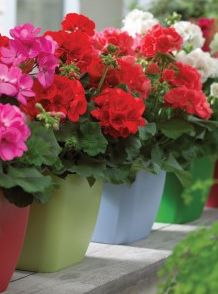
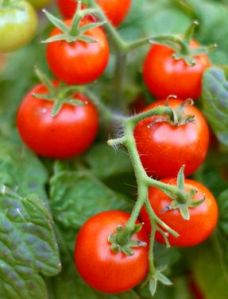

 Once you are happy with the levels, a fresh new layer of top soil needs to go down as a base for the new turf. As grass is shallow-rooted, it would be highly beneficial to lay approximately 2 inches of new top soil. This has to be factored in, when removing the old soil, as the level of the lawn will need to be at a required level, such as level with existing paving.
Once you are happy with the levels, a fresh new layer of top soil needs to go down as a base for the new turf. As grass is shallow-rooted, it would be highly beneficial to lay approximately 2 inches of new top soil. This has to be factored in, when removing the old soil, as the level of the lawn will need to be at a required level, such as level with existing paving. 
